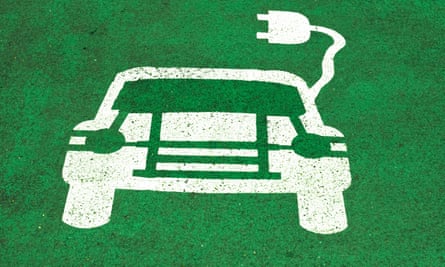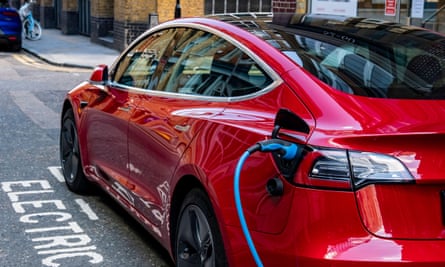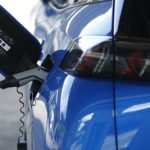When a fire ripped through a car park at Luton airport last month it set off a round of speculation that an electric vehicle was to blame. The theory was quickly doused by the Bedfordshire fire service, which said the blaze appeared to have started in a diesel car.
Yet the rumour refused to be quelled, spreading on social media like, well, wildfire. Even when these stories are patiently debunked, they come back as zombie myths that refuse to die.
Electric vehicles (EVs) will not deliver the environment from damage but international climate forecasters agree they are a crucial part of the transition from fossil fuels. The Guardian has spoken to experts and looked for hard data where possible to address some of the most common criticisms of electric vehicles.
In a series of articles, we will highlight the myths, the realities, and the grey areas. The first in our series asks: should we be more concerned about fires in electric cars?
The claim
The claims about electric car fires fall into two broad categories. The first is that fires are more common in electric cars, while the second is that when fires break out, they are more damaging.
If electric cars do pose more of a fire risk than petrol or diesel, that would have a host of consequences. One could be a requirement for larger car park spaces to stop fires spreading, while the Conservative MP Greg Smith, who serves on the transport committee, said in July that EV owners should pay higher insurance premiums to cover the extra costs to firefighters.
 View image in fullscreenIf electric cars did pose more of a fire risk they would need larger car park spaces to stop fires spreading. Photograph: Westend61/Getty Images
View image in fullscreenIf electric cars did pose more of a fire risk they would need larger car park spaces to stop fires spreading. Photograph: Westend61/Getty Images
The science
There are millions of electric cars on roads around the world, so some data on the prevalence of fires is emerging, albeit in piecemeal fashion. That evidence suggests there is no reason to think that EVs are more likely to go up in flames, several experts have said. Indeed, the opposite appears to be true.
“All the data shows that EVs are just much, much less likely to set on fire than their petrol equivalent,” said Colin Walker, the head of transport at the Energy and Climate Intelligence Unit thinktank. “The many, many fires that you have for petrol or diesel cars just aren’t reported.”
Fires can start in several ways. Car batteries store energy by moving lithium ions inside a battery cell but if cells are penetrated or if impurities from manufacturing errors cause short-circuits, then unwanted chemical reactions can start “thermal runaway”, where cells heat up rapidly, releasing toxic and flammable gas. In petrol cars, fires can start via electrical faults causing sparks or if the engine overheats because of a fault in the cooling systems, potentially igniting flammable fuel.
In Norway, which has the world’s highest proportion of electric car sales, there are between four and five times more fires in petrol and diesel cars, according to the directorate for social security and emergency preparedness. The Swedish Civil Contingencies Agency this year found that there were 3.8 fires per 100,000 electric or hybrid cars in 2022, compared with 68 fires per 100,000 cars when taking all fuel types into account. However, the latter figures include arson, making comparisons tricky.
Australia’s Department of Defence funded EV FireSafe to look into the question. It found there was a 0.0012% chance of a passenger electric vehicle battery catching fire, compared with a 0.1% chance for internal combustion engine cars. (The Home Office said it was unable to provide data for the UK.)
Elon Musk’s Tesla is the world’s biggest maker of electric cars. It says the number of fires on US roads involving Teslas from 2012 to 2021 was 11 times lower per mile than the figure for all cars, the vast majority of which have petrol or diesel engines.
 View image in fullscreenA Tesla Model 3 charging on a city street. Photograph: William Barton/Alamy
View image in fullscreenA Tesla Model 3 charging on a city street. Photograph: William Barton/Alamy
Any caveats?
The reason for the belief that electric cars are more fire-prone becomes clearer when you watch a video of one: they can be furious infernos.
Paul Christensen, a professor of pure and applied electrochemistry at Newcastle University, studies batteries and helps to train fire brigades. He highlights the ominous risks of “vapour cloud explosions and rocket flames” when the gases burst out of cells.
 View image in fullscreenPaul Christensen, a professor at Newcastle University, advises owners of electric scooters not to leave them charging indoors or unattended. Photograph: Avpics/Alamy
View image in fullscreenPaul Christensen, a professor at Newcastle University, advises owners of electric scooters not to leave them charging indoors or unattended. Photograph: Avpics/Alamy
However, Christensen said the electric car’s reputation was being tarnished by their lithium ion cousins. He has real concerns with electric scooters and bikes that use similar technology but often from unregulated, inexperienced manufacturers, or even DIY jobs using internet-sourced parts. (He advises people never to leave scooters charging indoors or unattended.)
There is also a definite puzzle for firefighters, as battery fires require more water to put out, can burn almost three times hotter, and are more likely to reignite, according to EV FireSafe. Some fire departments have experimented with complete immersion of electric cars in water tanks.
The verdict
Despite the increased danger once a battery fire is burning, the probability of being caught in an EV fire appears overall to be much lower than for petrol or diesel cars, based on currently available data – although this could change as more people get electric cars.
Walker said it was possible that the prevalence of fires in EVs could increase as the average age of batteries on the roads increases. However, at this point, it appears that they would have to multiply by many times to be worse than internal combustion engines.





